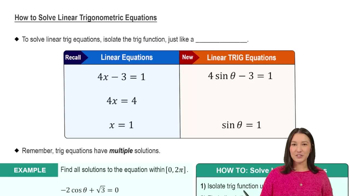Textbook Question
In Exercises 1–10, use substitution to determine whether the given x-value is a solution of the equation. 1 2𝝅cos x = ﹣ ------- , x = --------- 2 3
388
views






